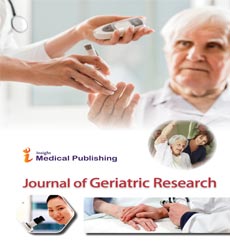Survivorship: A successful outcome indicator in PC settings on community-based studies on the geriatric population group
Abstract
Introduction: In our day today life specially related to PC settings the topic related to Survivorship amongst the patients & the family friends, caregivers, caretakers, etc. are talked amongst the families only that too in closed doors, with little room for detailed discussion even without involving the patient consent or in decision making processes. Thus I do feel in this community based study which was undertaken … survivorship is an outcome indicator & further any studies related to geriatric population this becomes central point & should be in built into the health systems with convergence at the primary health care level itself. Methodology: Sample size calculation: The sample size was calculated separately for urban & rural areas as previous studies have shown large variations in urban & rural prevalence of Type 2DM. Assuming an expected prevalence of 10% in urban areas & 4% in the rural areas, allowing a relative error of 20% on these, a non-response rate of 20% & an error of 5%, the sample size was estimated to be 1200nos in Urban areas & 2800 in Rural areas in each of the regions studied. Thus every state/ province a total of 4000nos individuals/state & the total population ie 16000nos in the studied areas viz Assam, Mizoram, Arunachal Pradesh & Tripura. Results: The overall weighted prevalence of diabetes in the states/ province was Assam 5.4%, Mizoram 5.7%, Arunachal Pradesh 5.2% & Tripura 8.6% respectively. In Assam, the weighted prevalence of diabetes in urban areas was 12.4%, which is nearly three times The rate found in rural areas (4.4%). The overall weighted prevalence of pre-diabetes in Arunachal Pradesh was 12.8% (IFG: 9.7%, IGT: 1.8% and IFG+IGT: 1.3%) and in Tripura overall weighted prevalence of pre-diabetes was 14.6% (IFG: 9.3%, IGT: 3.5% and IFG+IGT: 1.8%). Conclusions: This community based study was undertaken in the above states in this part of NE Region of India clearly demonstrates the power of community mobilization & engagement of various sections of tribes/sub-tribes residing in this part of region in giving a clear mandate to the project which is reflected with an average response rates >90% in the studied areas. The increased levels of referrals with the local health institutions (either at govt or at private sectors) & building up networking & advocacy programs in collaboration with the like-minded organizations is of great importance in tackling this public health problem. Converging this with primary care providers on health or with the local govt programs helps in better & robust Survivorship in the affected community. This assumes significant changes on community based studies outcomes related to …Survivorship as successful outcome indicator in PC settings for any Geriatric population.
Open Access Journals
- Aquaculture & Veterinary Science
- Chemistry & Chemical Sciences
- Clinical Sciences
- Engineering
- General Science
- Genetics & Molecular Biology
- Health Care & Nursing
- Immunology & Microbiology
- Materials Science
- Mathematics & Physics
- Medical Sciences
- Neurology & Psychiatry
- Oncology & Cancer Science
- Pharmaceutical Sciences
